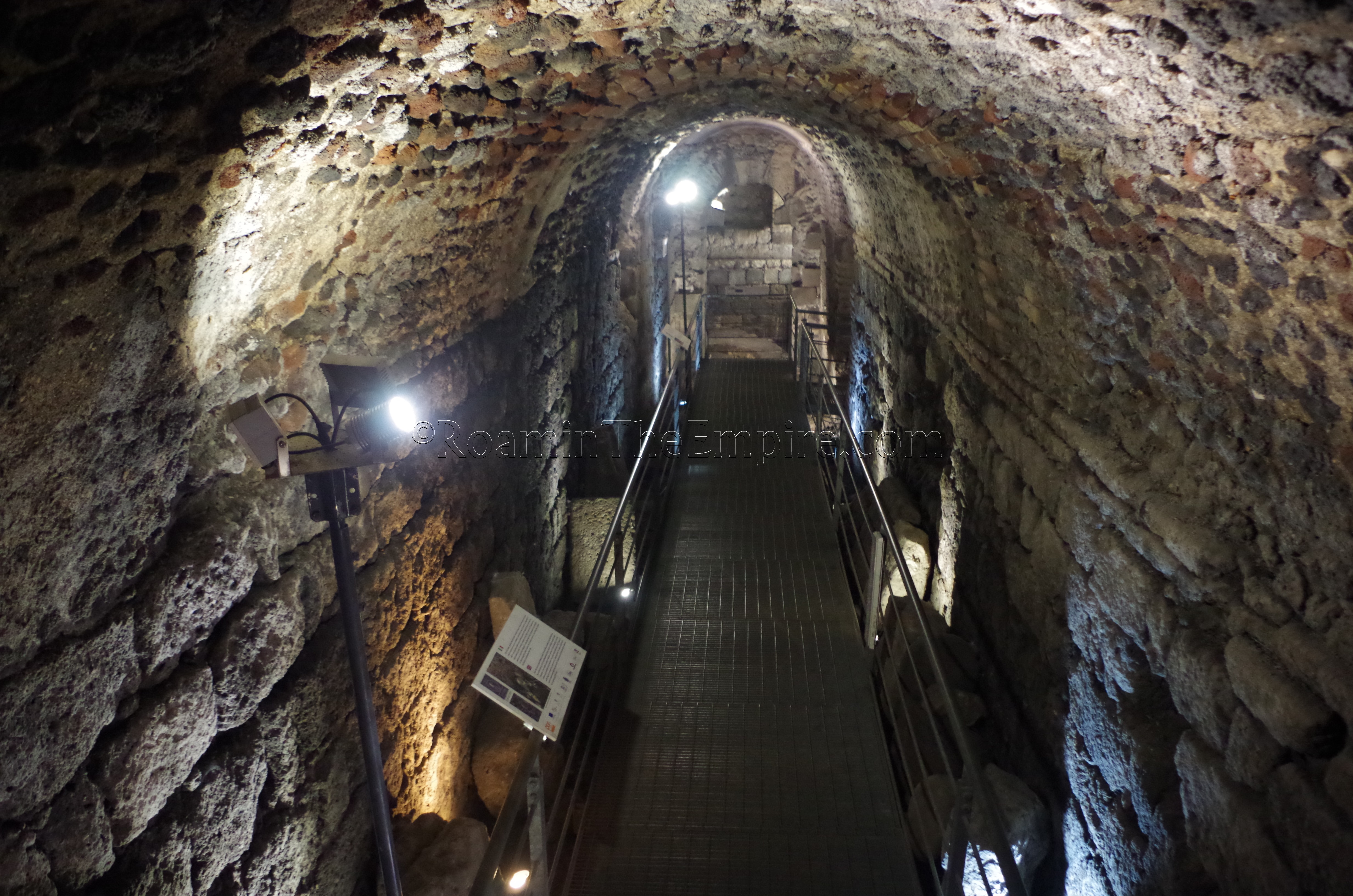
Most Recent Visit: June 2017.
Like many of the cities in eastern Sicily, the second largest city on the island, Catania, has its origin in one of the Greek colonies in that part of the island. The exact date of founding is unknown, but it is believed to be around 729 BCE when Chalcidian colonists settled on the site and named it Katane, later Catana under the Romans. There may have also been a Sicel town preceding the Greek colony, also with the name Katane, of which the Greeks displaced to found the colony. Not much is known of Catana early on, though it appears to have functioned as an independent city state until it was invaded by Hiero of Syracuse in 476 BCE. At that time, he expelled the Chalcidian inhabitants of the Catana to Leontini and replaced them with 10,000 settlers from Syracuse and the Peloponnese. The name was also changed to Aitne, a reflection of the proximity of the nearby Volcano of the same name in Greek, and Hiero declared himself the founder of a new colony.
Following the death of Hiero, the expulsion of the tyrant Thrasybulus, and the establishment of democracy at Syracuse, the Syracusans and Ducetius, the Sicel king, forcibly expelled Hiero’s colonists from Catana in 461 BCE and the Chalcidian’s were returned. Hiero’s colonists would go on to settle at the Sicel town of Inessa on the slopes of Mt. Aetna and rename it Aitne, while Catana went back to its previous designation. Catana would go on to be a prosperous city, but receives no specific historical mentions until the Athenians’ Sicilian Expedition in 415 BCE. When the Athenians first landed on Sicily, they petitioned the Cataneans to allow them into the city and join with them against Syracuse. Initially the Cataneans refused, despite the historic connection of the Chalcidian’s to the Athenian alliance, as some were sympathetic to Syracuse. Alcibiades convinced the Cataneans to allow him to plead the cause of Athens, and while that was happening, the Athenian army surreptitiously entered the city, causing those that favored Syracuse to flee and removing the opposition to an alliance with the Athenians. Catana then served as the base of operations for the Athenians for the next year.
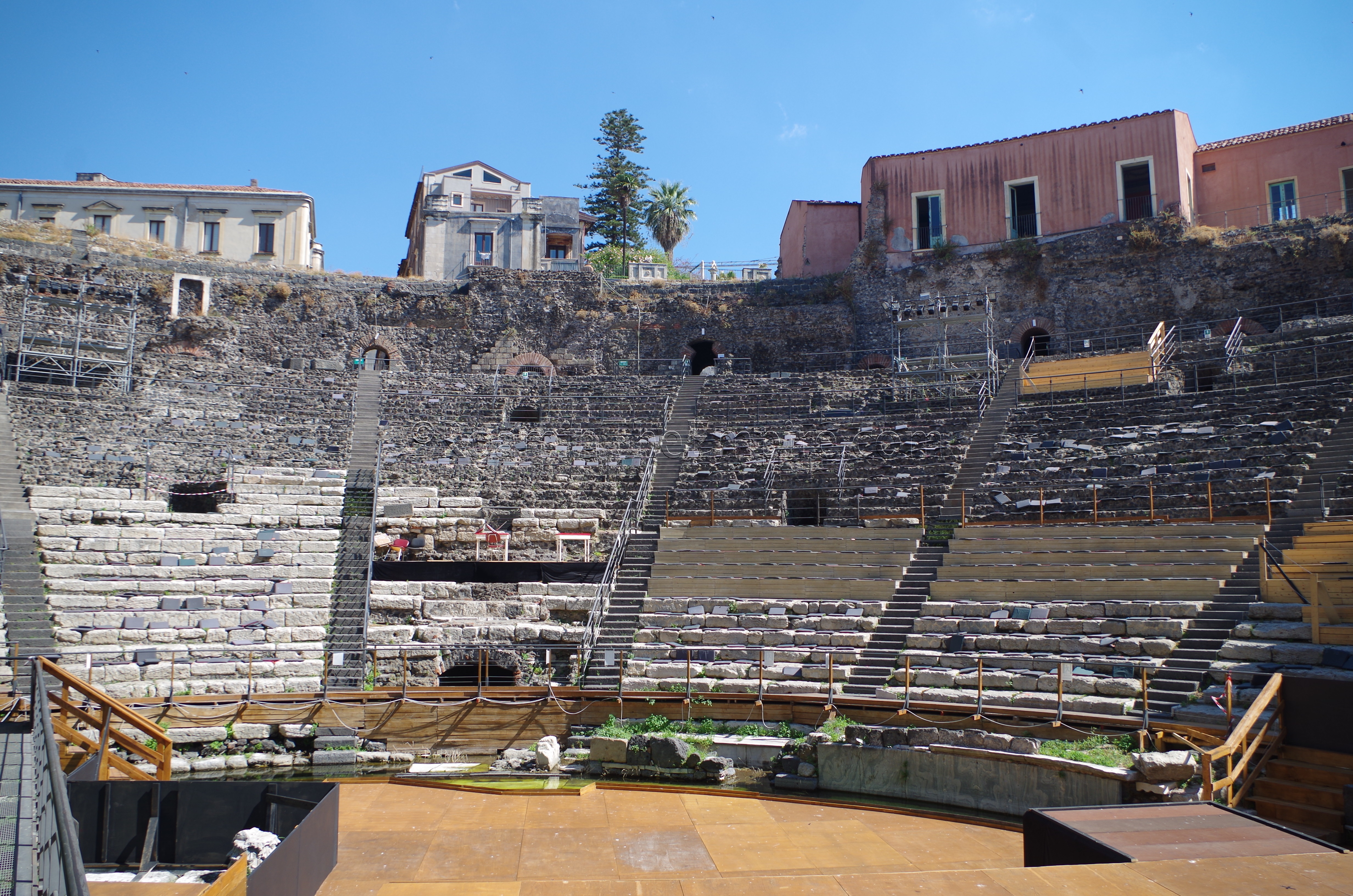
Catana’s immediate fate in the aftermath of the Athenian’s failed campaign is not clear, but, Syracuse seems to have exacted some measure of retribution after Dionysius came to power in Syracuse. In 403 BCE, Dionysius captured Catana after it was betrayed by the Catanian genera Arcesilaus, and the city was sacked, inhabitants sold into slavery, and a colony of Campanian mercenaries was established there. As with the previous attempt of a Syracusan tyrant to settle the city, Dionysius’ colonists were not at Catana for long, as in 397 BCE, they too left for Aitne under the threat of an approaching Carthaginian army of great size. That Carthaginian army engaged the Sicilian Greeks in a naval battle off the coast of Catana that year, resulting in a devastating defeat for the Greeks, numbering perhaps 100 ships and 20,000 men lost. Following the battle, Carthage occupied Catana. The following year, a plague hit the Carthaginian army, forcing them to give up their campaign in eastern Sicily and returning Catana to the Greeks.
It is unclear who inhabited Catana after that episode, as the Campanian mercenaries had moved to Aitne and the previous inhabitants were sold into slavery, but, the city continued to play a part in the happenings of the island. After Dion of Syracuse was assassinated in 354 BCE by Callippus, who subsequently became ruler of Syracuse, the latter took control of Catana for a short period of time after being exiled from Syracuse. When Timoleon landed in Sicily in 344 BCE, Catana was under the rule of the tyrant Mamercus, who initially pledged allegiance to Timoleon, but later allied the city with the Carthaginians. When Mamercus left to enlist help from mainland Italy, though, his companions left him and returned to Catana to hand the city over to Timoleon, and Mamercus was eventually tried in Syracuse and crucified after attempting suicide. In the subsequent conflicts between the Carthaginians and Greeks, the loyalties of Catana changed several times, but the city was never conquered by an opposing force. When Pyrrhus landed in Sicily, Catana welcomed the general with great fanfare.
When the First Punic War broke out, Catana was one of the first cities in Sicily to make peace with the Romans in 263 BCE, as the Romans marched south from Messena to besiege Syracuse. From then on, Catana remained on friendly terms, but at some point came under direct rule of the Roman system, as it was not afforded the civitas foederata that nearby Tauromenium and Messena enjoyed, though it was a civitas decumana. In 121 BCE, a particularly violent eruption of Mt. Aetna caused considerable damage to the city, including damage to building both from burning embers and the weight of ash. As a result, Catana was exempt from paying taxes for 10 years in order to help the city recover.
By the time of Cicero, the city was apparently flourishing and wealthy and was a primary departure point for grain export. During the Sicilian Revolt of Sextus Pompey, Catana didn’t feature directly in the fighting, but apparently suffered to some degree during the conflict, necessitating a colony under Augustus. After that point, Catana doesn’t feature much in history, but it is mentioned as growing in importance and being a prosperous city throughout the remainder of the Roman period.
Getting There: As previously mentioned, Catania is the second largest city on the island behind Palermo, and as such, there are both bus and train connections from nearly everywhere on the island. The airport there is the most active on the island, with flights to and from locations all over Italy and Europe.
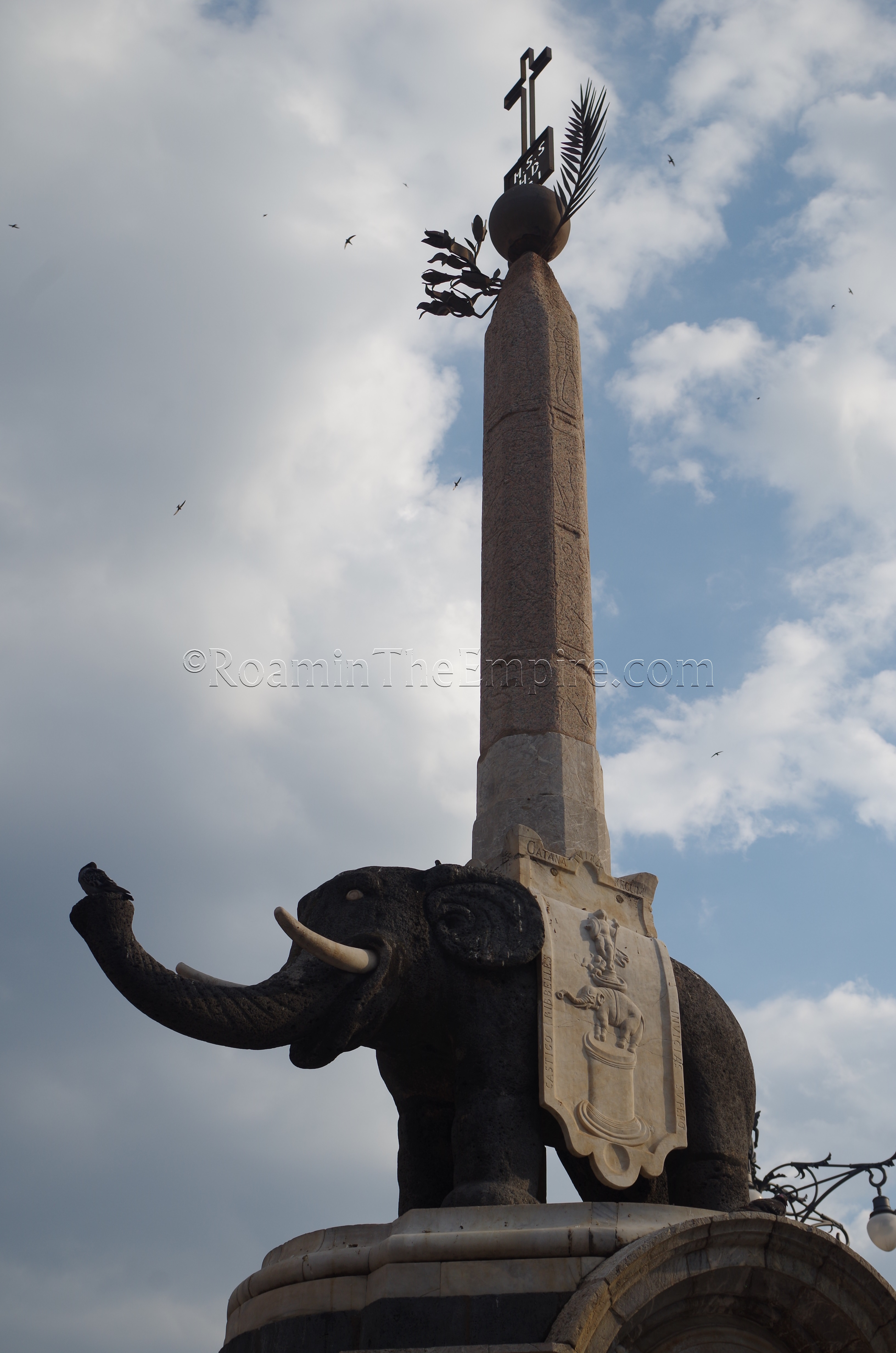
The Roman archaeological remains in Catania are pretty prolific, though they are spread out all over the historic center of the city, often bits and pieces incorporated into the modern town. Starting in Piazza del Duomo, in front of the Cattedrale di Sant’Agata, is the Fontana Dell’Elefante. The fountain itself was created in 1736, but two elements, the basalt elephant and the obelisk, have origins before then. The obelisk is definitively of ancient origin, believed to have come from Syene, Egypt and used in the spina of the Roman circus of Catana. The basalt elephant is a little more enigmatic, with the exact origins unknown, but believed to possibly date to at least the Roman period, or possibly even before. There is one theory that suggests the elephant imagery may be related in some way to either the Carthaginian dominion of the city or to the conflict with Carthage.
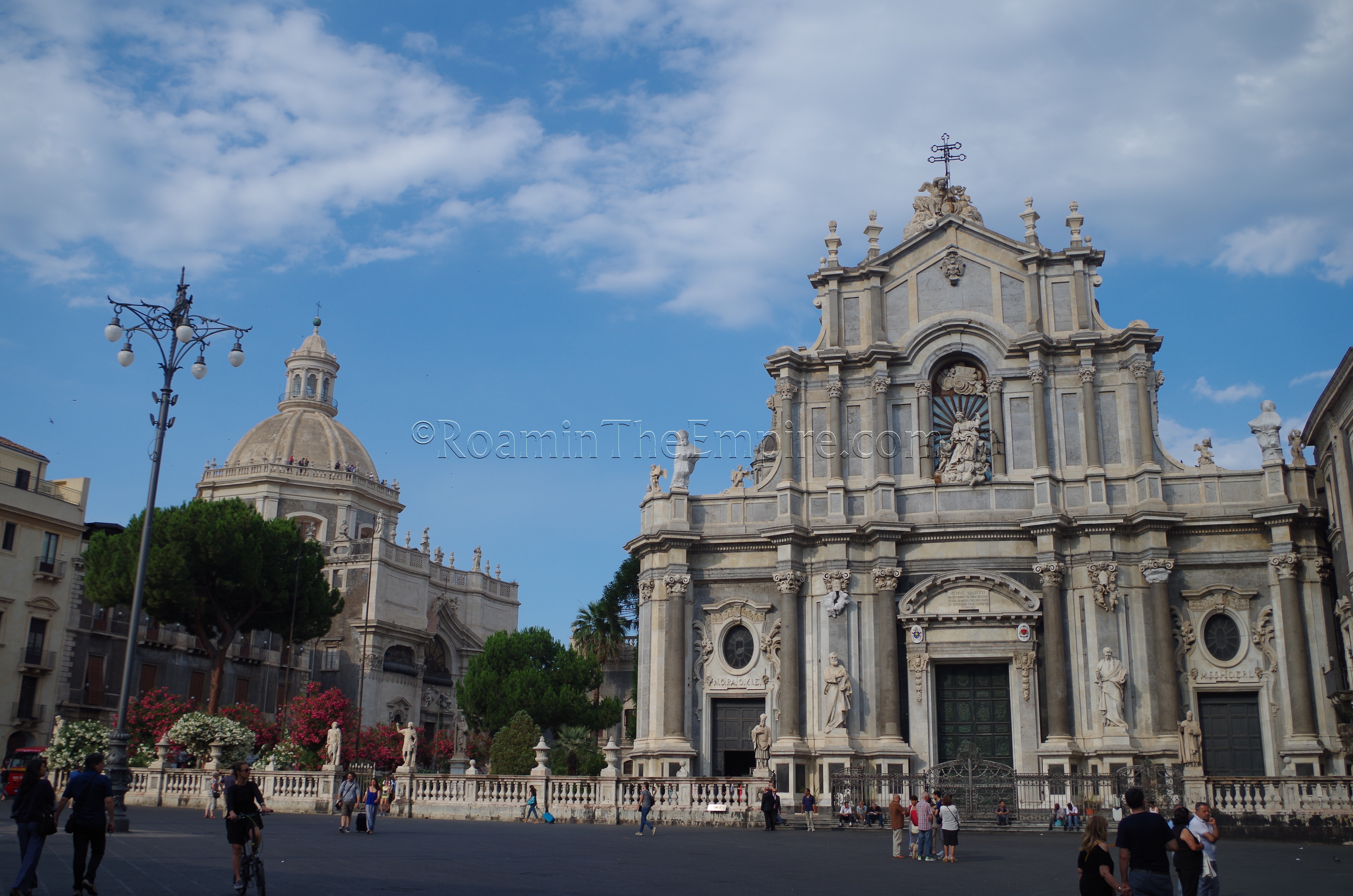
On the east side of the piazza is the Cattedrale di Sant’Agata. On the façade of the cathedral are three tiers of granite Corinthian columns, believed to have been taken from either the theater or amphitheater of the city. To the right of the entrance to the cathedral (when facing the façade) is a small stairway leading down to the Terme Achilliane, the Achillian Baths. The opening hours of the baths are Monday through Friday from 9:00 to 14:00 and on Saturday from 9:00 to 13:00. There are no regular opening hours for Sunday and holidays, though group reservations can be made for those days. Admission is 5 Euros, though there are some days when it is less; when I visited on a Sunday in June there was a special opening and it was only 2 Euros.
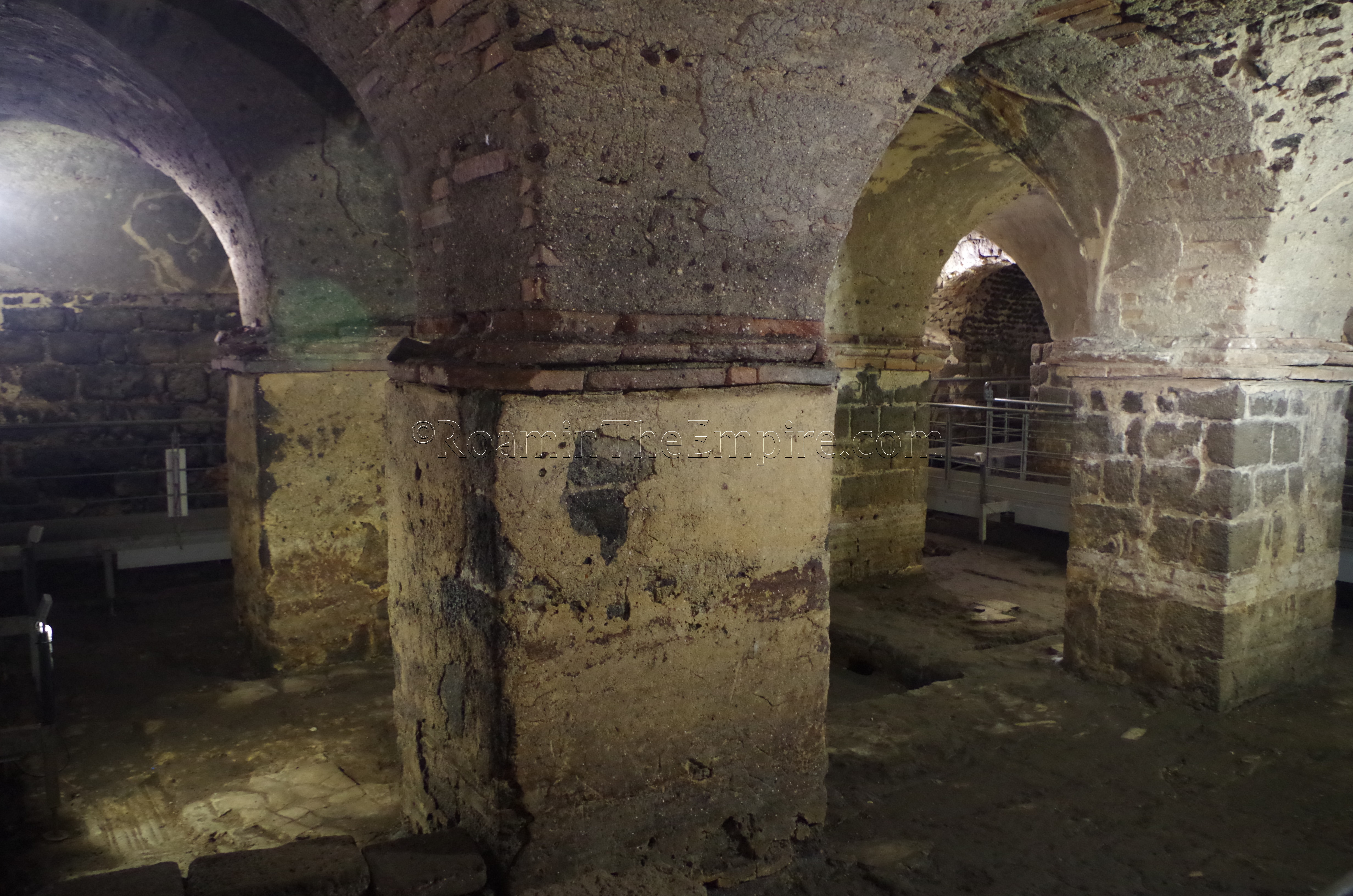
The Terme Achilliane are the remains of a 2nd century CE bathing complex. The name is taken from a Greek inscription found on the site (and displayed in the Museo Civico Castello Ursino) regarding a restoration of the baths in 434 CE and naming them as such. Most of what remains is a large hall, referred to as the Hall of Piers, and an adjacent corridor. There are some basins surrounding the hall as well as a large water channel. A small, later walled in room off the entry corridor also contains what is believed to be the remains of the tepidarium. One of the more unique aspects of this site is the use of water; the channels and basins still carry water throughout the site. Overall, 5 Euros is a little steep given what remains, but, it is quite interesting with a lot of well-preserved structures. It’s hard to beat the respite from the heat that this underground site offers during the summer as well. There are several signs throughout in both English and Italian explaining various aspects of the baths.
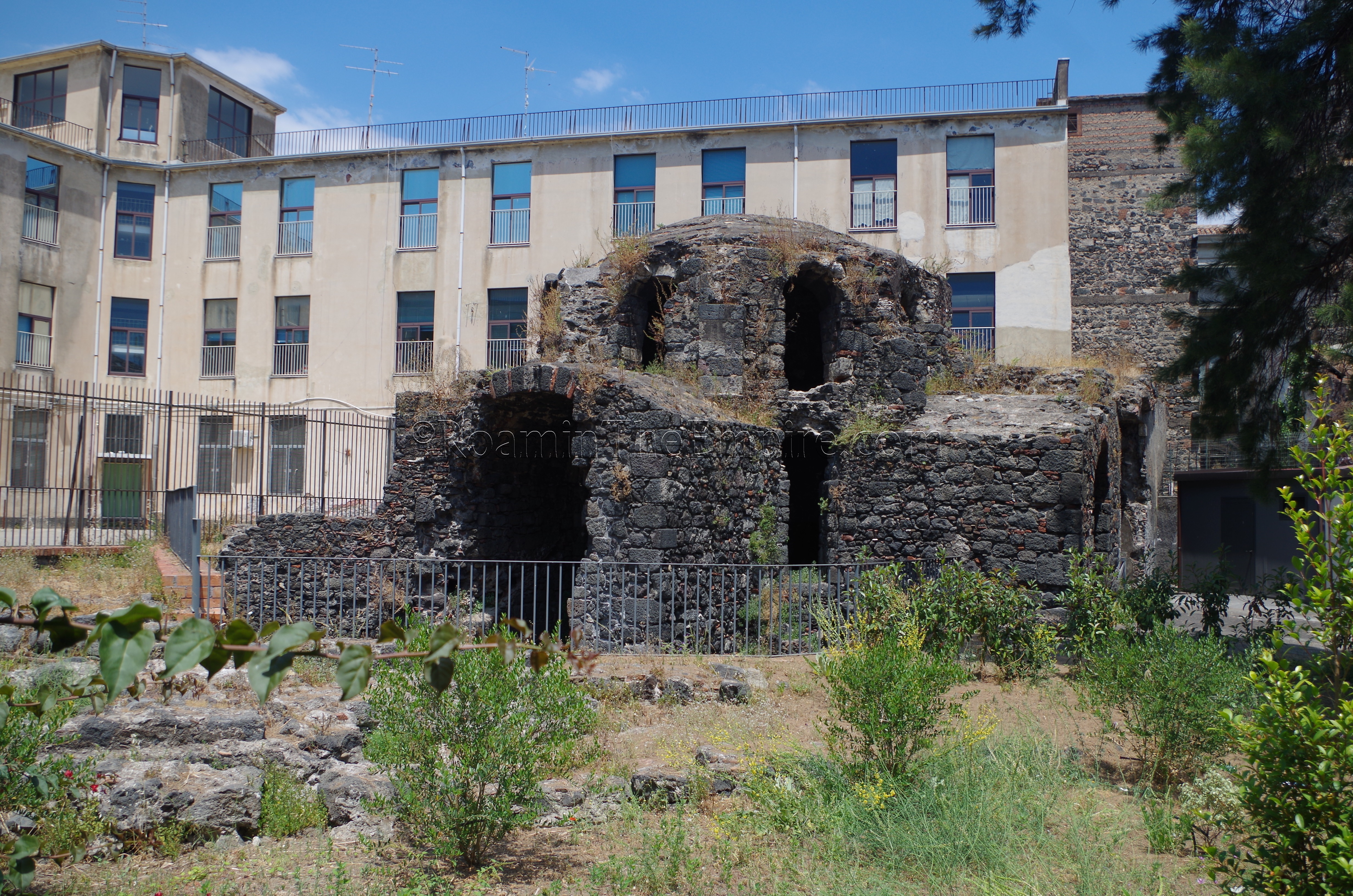
A bit to the southwest are another set of baths, though these are above ground. Off of Piazza Currò, behind the Chiesa Santa Maria dell’Indirizzo, are the Terme dell’Indirizzo. These baths have no regular hours, but can supposedly be visited, for free, with a reservation (095/7150508, polomuseale.ct@regione.sicilia.it). The remains can also be viewed from outside the fenced in area of the baths, along Via Bozomo. What remains seems to be a large intact rotunda building with some additional ground level foundations surrounding it. The baths are dated to the 2nd century CE, and the structure apparently contains the caldarium, tepidarium, and praefurnium.
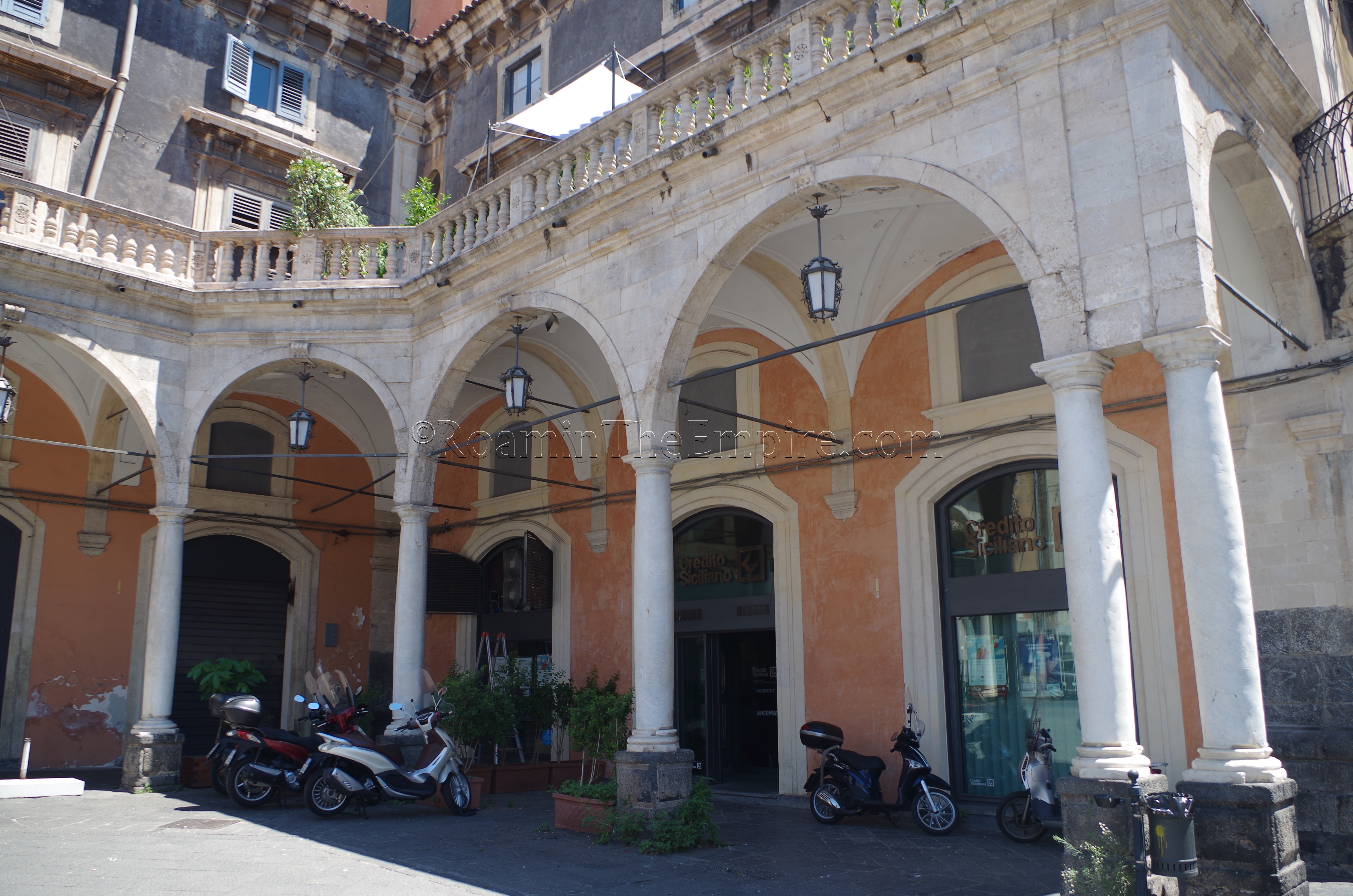
A few blocks to the north/northwest is Piazza Giuseppe Mazzini, at the intersection of Via Giuseppe garibaldi and Via Auteri/Via Santa Maria della Lettera. A modern colonnaded portico runs along the buildings of each corner of the piazza. The columns that are used in this portico are believed to have been spoliated from a Roman basilica that once stood at the location of the church and convent of San Agostino, about 230 meters to the northwest of Piazza Giuseppe Mazzini, and just to the west of the theater and odeon complex. There does not seem to be any visible, extant remains of the basilica, though.
A bit further to the west are a few sites where there isn’t really anything to see presently, but are worth at least mentioning. The first is the site of the forum, which is located at the Cortile San Pantaleone. There is a sign denoting the presence of the form at this location at the entrance to the courtyard on Via Santissima Trinità, but there is nothing visible here; though there is evidence of the forum being at this location, just nothing that can be seen at present. The presence of the courtyard likely preserves some of the open space of the original forum here. A bit further south are the Terme di Sant’Antonio Abate, a small set of inaccessible remains of 2nd century CE baths tucked in the southeast corner of Piazza Sant’Antonio. Where there is technically a window to look in on the remains, the ramp leading to it is used as parking by the locals living next to it, and wandering through their cars is not looked upon favorably. There doesn’t seem to be any information about visiting these remains, even by reservation.
Further south is the Castello Ursino, a 13th century castle, which now functions as the Museo Civico and houses the city’s archaeological collection. The Castello Ursino is located at Piazza Federico II di Svevia. The museum is open every day from 9:00 to 19:00 and admission is 6 Euros.
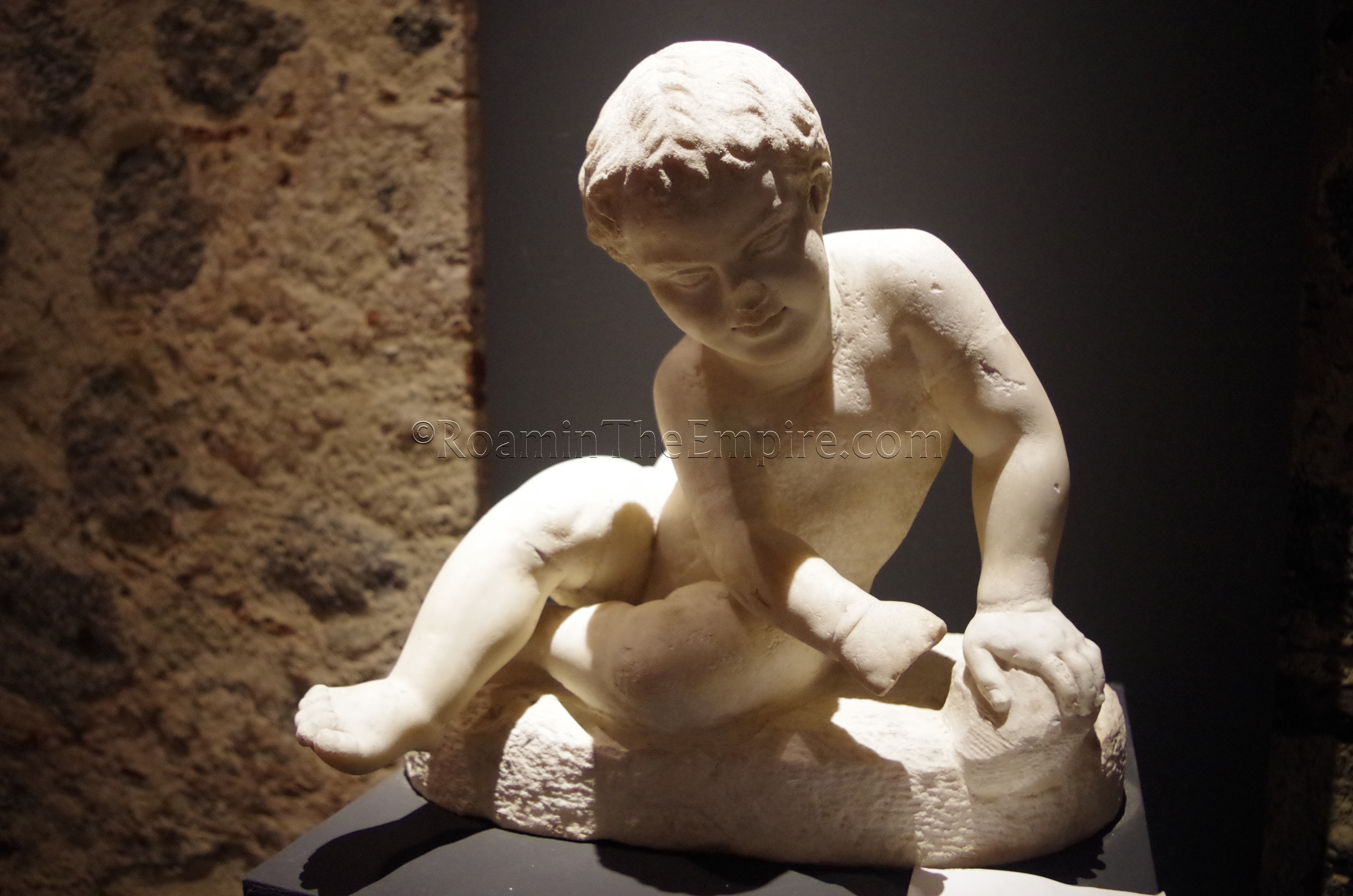
The archaeological collection at the museum isn’t exceptionally large, and really, it only makes up a fraction of the entire collection here. Most of the Greek/Roman era artifacts are displayed on the ground floor of the museum, including some larger architectural pieces that are on display in the courtyard of the castle. The archaeological collection is surprisingly light on ceramics, particularly for a museum in Magna Graecia, though there are some examples of Greek pottery and a few ceramic figurines. There are quite a few sculptural fragments, as well as some intact/restored sculptures and architectural decorative elements. There are some nice portrait busts and a few inscriptions, including the inscription from the Terme Achilliane. Some mosaics and a few wall painting fragments round out the majority of the collection. It’s also worth mentioning that there are some classically themed works from later periods that are also on display in other areas of the museum.
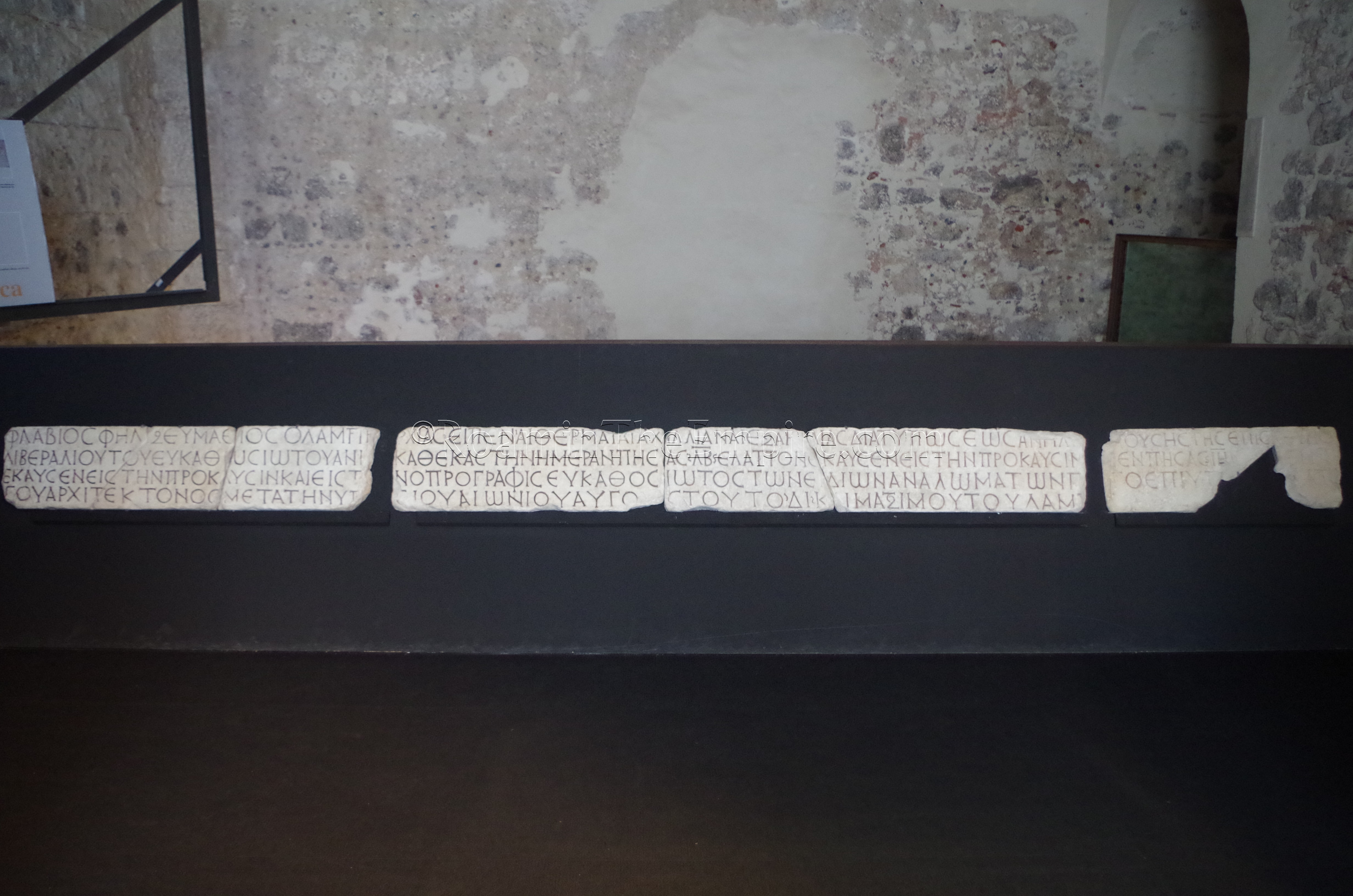
Again, the archaeological collection is not excessively large, but, the pieces are typically of pretty high quality. The museum definitely doesn’t suffer from the problem that some others do, trying to display everything down to any pottery sherd bigger than a Euro. The rest of the museum is quite nice and the setting is rather unique. The classical archaeology section took me about half an hour or so, while the museum as a whole took about an hour and a half. There are informational signs in both Italian and English, and most artifacts also have English descriptions to accompany the Italian. The price of admission might be a little much for the archaeological collection alone, but overall for the museum as a whole, it is certainly reasonable.
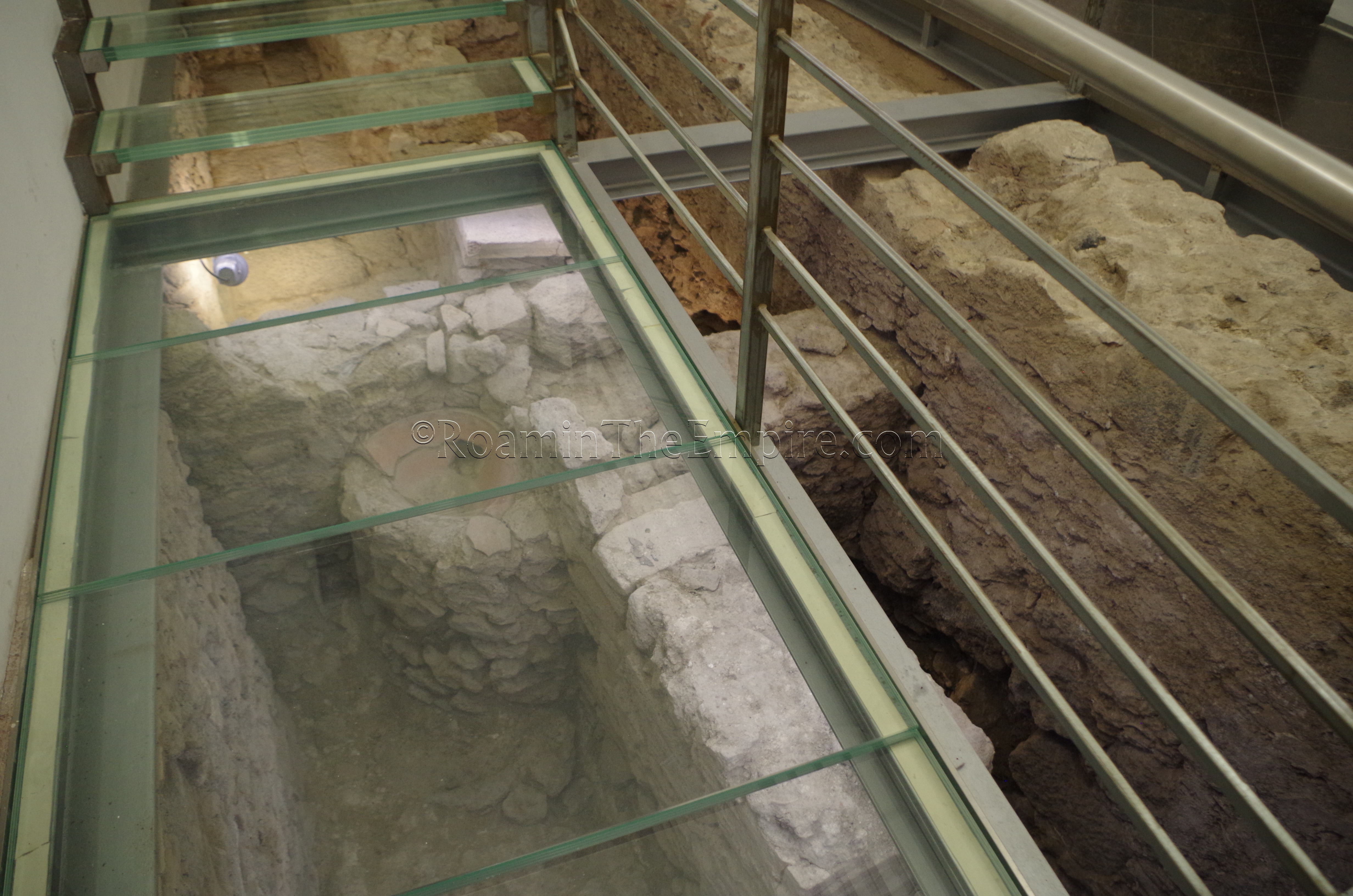
Just to the northeast of the theater (covered in part II) is the Monastero di San Benedetto, which hosts the Sito Storico di San Benedetto. The monastery complex is quite large, taking up the whole block, but the actual entrance is at the northwest corner of the intersection of Via Teatro Greco/Via S. Francesco D’Assisi and Via Crociferi at about Via Teatro Greco 4. The site is only open on Tuesday, Friday, and Saturday from 10:00 to 17:00 and costs 5 Euros. The price includes an audioguide.
The Roman remains here are very scant and limited to a small portion of a Roman domus at the very start, under the walkway, right past the front desk. The real draw of this particular site, for most, is the richly decorated rooms of the monastery, which, certainly are beautiful and impressive. There’s not a whole lot of signage, as the audioguide is meant to serve that purpose. If one’s interests don’t extend much beyond seeing the Roman domus, it might be advisable to skip, as 5 Euros is quite steep. But, the rest of the monastery site makes up for the cost, if that is of any interest.
Continued next week in Part II.
Sources:
Cicero, In Verrem, 4.23.
Diodorus Siculus, Bibliotheca Historica, 11.49, 11.76, 13.4-6, 14.15, 14.58-61, 16.69, 19.110, 22.8.
Livy, Ab Urbe Condita, 27.8.
Orosius, Historiae Adversus Paganos, 5.13.
Plutarch, Alcibiades, 20.
Plutarch, Dion, 58.
Plutarch, Nicias, 15-16.
Plutarch, Timoleon, 13, 30-34.
Smith, Christopher John. Sicily from Aeneas to Augustus: New Approaches in Archaeology and History. Edinburgh Univ. Press, 2007.
Smith, William. Dictionary of Greek and Roman Geography. Walton & Murray, 1870.
Stillwell, Richard, William L. MacDonald, and Marian Holland. McAllister. The Princeton Encyclopedia of Classical Sites. Princeton, NJ: Princeton U Press, 1976.
Strabo, Geographica, 5.3, 6.2.
Thucydides, Histories, 5.4, 6.4, 6.50-52. 6.63, 6.71.


